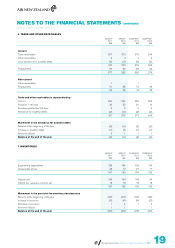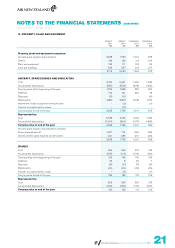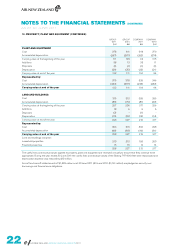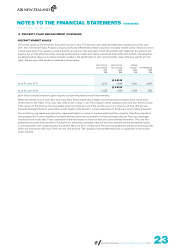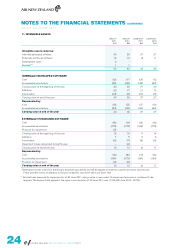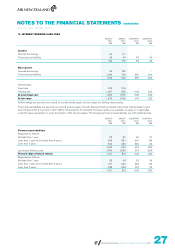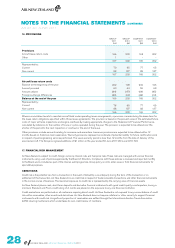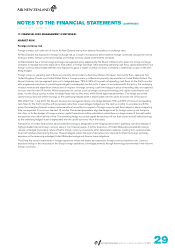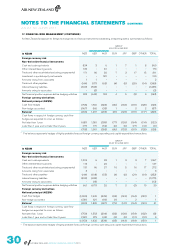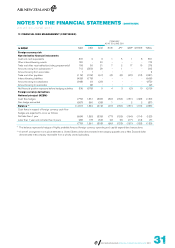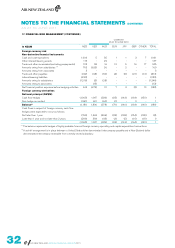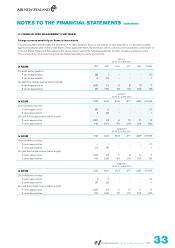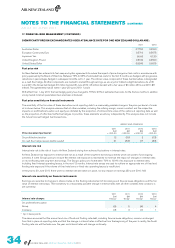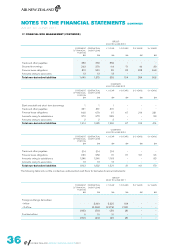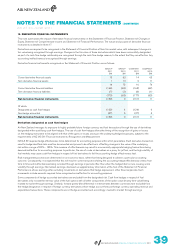Air New Zealand 2011 Annual Report Download - page 31
Download and view the complete annual report
Please find page 31 of the 2011 Air New Zealand annual report below. You can navigate through the pages in the report by either clicking on the pages listed below, or by using the keyword search tool below to find specific information within the annual report.
17. FINANCIAL RISK MANAGEMENT (CONTINUED)
MARKET RISK
Foreign currency risk
Foreign currency risk is the risk of loss to Air New Zealand arising from adverse fluctuations in exchange rates.
Air New Zealand has exposure to foreign exchange risk as a result of transactions denominated in foreign currencies, arising from normal
trading activities, foreign currency borrowings and foreign currency capital commitments and sales.
Air New Zealand has a formal foreign exchange management policy (approved by the Board of Directors) to enter into foreign exchange
contracts to manage economic exposure to fluctuations in foreign exchange rates impacting operating cash flows, capital expenditure and
foreign currency denominated liabilities. Any exposure to gains or losses on these contracts is offset by a related loss or gain on the item
being hedged.
Foreign currency operating cash inflows are primarily denominated in Australian Dollars, European Community Euro, Japanese Yen,
United Kingdom Pounds and United States Dollars. Foreign currency outflows are primarily denominated in United States Dollars. The
Group’s treasury risk management policy is to hedge between 75% to 95% of forecast net operating cash flows for the first 6 months,
with progressive reductions in percentages hedged in subsequent months out to 2 years. In accordance with this policy, the underlying
forecast revenue and expenditure transactions in respect of foreign currency cash flow hedges in place at reporting date, are expected
to occur over the next 24 months. Where exposures are certain, such as foreign currency borrowings and capital commitments and
sales, it is the Group’s policy to elect to hedge these risks as they arise, within Board approved parameters. The hedge accounted
capital transactions will affect earnings as the underlying hedged asset is depreciated over the useful economic life of that asset.
With effect from 1 July 2011, the Group’s treasury risk management policy is to hedge between 70% and 90% of forecast net operating
cash flows for the first 6 months, with progressive reductions in percentages hedged over the next six months. In accordance with this
policy, the underlying forecast revenue and expenditure transactions in respect of foreign currency cash flow hedges in place at reporting
date, are expected to occur over the next 12 months. The revised parameters align the hedge terms for foreign currency and fuel price
risk. Also, no further hedges of foreign currency capital transactions will be undertaken unless there is a large volume of forecast capital
transactions over a short period of time. The remaining hedge accounted capital transactions will run their course and will affect earnings
as the underlying hedged asset is depreciated over the useful economic life of that asset.
A proportion of United States Dollar denominated borrowings is designated as the hedging instrument in qualifying cash flow hedges of
highly probable forecast foreign currency sales of non-financial assets. A further proportion of United States denominated borrowings
remains unhedged to provide a natural offset to foreign currency movements within depreciation expense, resulting from revisions made
to aircraft residual values during the year. These strategies reduce the level of derivative cover required to offset the foreign exchange
exposure on the remaining unhedged United States borrowings and finance lease obligations.
The Group has certain investments in foreign operations, whose net assets are exposed to foreign currency translation risk. Currency
exposure arising on the net assets of the Group’s foreign operations is managed primarily through borrowings denominated in the relevant
foreign currencies.
NOTES TO THE FINANCIAL STATEMENTS (CONTINUED)
AS AT 30 JUNE 2011
AIR NEW ZEALAND ANNUAL FINANCIAL RESULTS 2011


